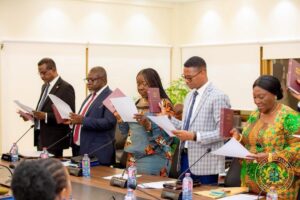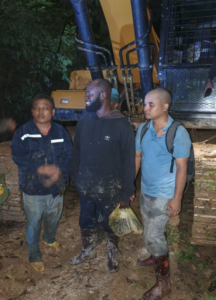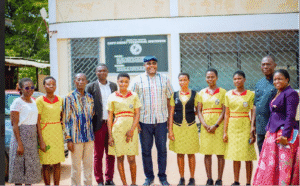
Photo: Gertrude Araba Torkornoo Sackey at her press conference
The Chief Justice’s recent emotional invocation of Adu Lodge as a traumatic site “prominently linked” to the gruesome 1982 murders of three judges and a retired army officer has been sharply contested—this time, not by political opponents, but by a leading constitutional activist armed with declassified archives and cold facts.
During a widely broadcast press conference on Wednesday, the Chief Justice claimed that Adu Lodge had played a central role in the planning of the June 30th killings that continue to haunt Ghana’s democratic memory. She suggested that the site, long regarded as the official residence of Supreme Court justices, bore psychological weight due to its alleged role in that dark chapter of history.
But less than 24 hours later, Oliver Barker-Vormawor, a Cambridge-trained lawyer and convener of the #FixTheCountry movement, issued a sober—and—stinging rebuttal.
“The Chief Justice’s claim is absolutely incorrect,” Barker-Vormawor wrote in a public fact-check posted to his verified page. “Adu Lodge was at no point mentioned, used for, or connected in any way with the ‘planning’ or ‘execution’ of the murders.”
Citing the Report of the Special Investigative Branch and comments by the Attorney General at the time, Barker-Vormawor noted that Adu Lodge appears only once in the entire investigation—and even then, only in a marginal context.
The sole mention, he says, arises from a post-event encounter between Amartey-Kwei—one of the convicted conspirators—and Captain Kojo Tsikata. According to the report, Tsikata had allegedly pulled up in his car outside the Lodge on 31st October 1982—four months after the murders—to caution Amartey-Kwei against making statements that could implicate the then-fledgling PNDC regime.
“There was no entry into the Lodge. There was no meeting inside. They sat in Amartey-Kwei’s Datsun, parked outside,” Barker-Vormawor explained, highlighting that even this mention came long after the crime had occurred on June 30th.
His intervention has intensified scrutiny of the Chief Justice’s use of historical references to justify institutional decisions. Critics now argue that the emotional appeal—meant to justify a reported reluctance by senior judges to reside in Adu Lodge—may have veered into historical revisionism.
“Our history may not be pleasant,” Barker-Vormawor wrote. “But let’s not falsify it in service of an immature self.”
The fallout is especially sensitive given the high symbolic value of the June 30th tragedy. The execution of judges Cecilia Koranteng-Addow, Kwadwo Agyei Agyapong, and Fred Poku Sarkodie—along with Major Sam Acquah—by forces linked to the PNDC regime remains one of Ghana’s most traumatic national scars.
The Chief Justice’s remarks were likely intended to evoke that legacy in defence of institutional sanctity. But legal observers say they also reveal an unsettling tension between memory, myth, and modern political positioning.
“There’s a real danger in blurring fact and sentiment,” a constitutional scholar told The Hawk on condition of anonymity. “Especially when such narratives are invoked by holders of the highest judicial office.”
As the debate rages on, attention now turns to whether the Judiciary will clarify or retract the statement, or risk deepening public distrust in an institution already wrestling with allegations of politicisation.
For Barker-Vormawor and others, the goal is not to diminish the sacrifices of 1982, but to ensure that truth remains the ultimate arbiter in public life.






